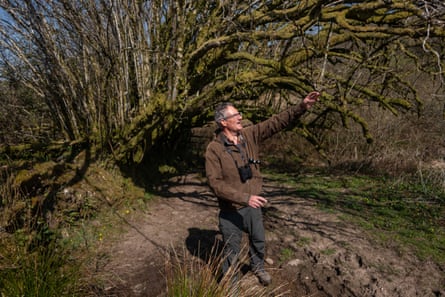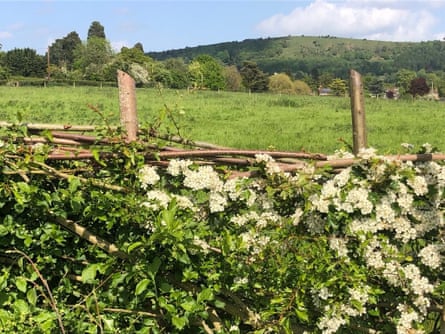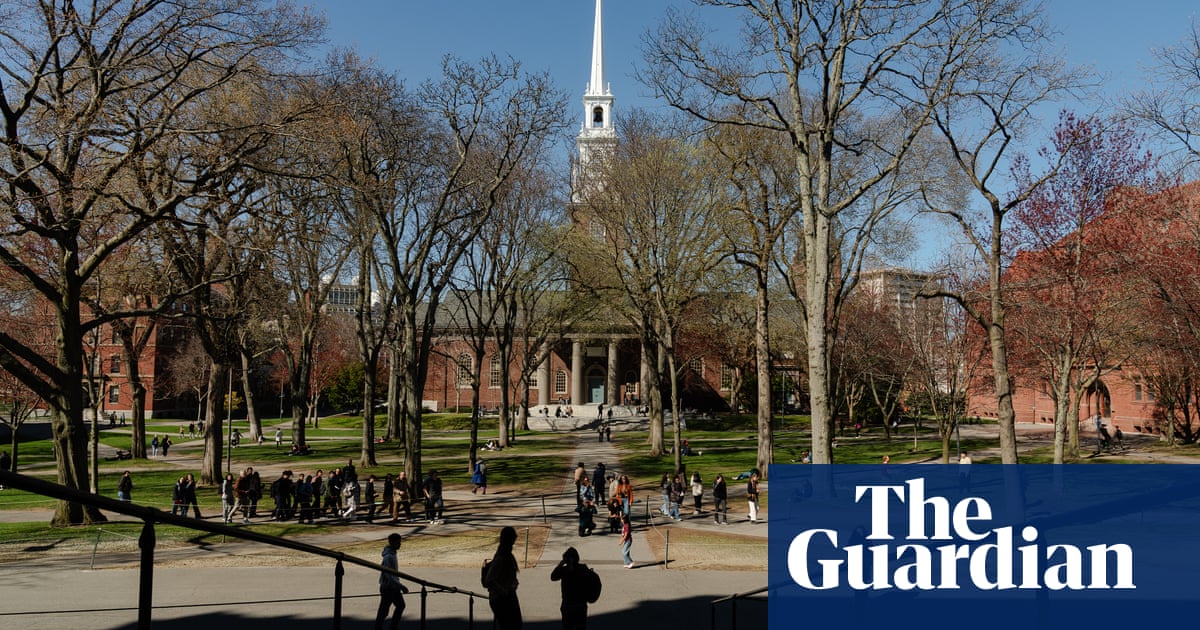The 30-metre ridge runs across the moor near Yar Tor on Dartmoor, one of several faint lines that crisscross the land like aeroplane contrails. Although the open moorland looks wild, we are standing on some of the UK’s oldest farmland. These ridges, called reaves, are the ghosts of farming’s most wildlife-rich legacy: hedges.
“These reaves sadly have no function today other than to delight us. Or some of us,” says ecologist Rob Wolton. But Dartmoor’s reaves are the skeletons upon which more recent hedges were built: hundreds of thousands of miles of them. After Ireland, the UK is believed to be the most hedge-dense country in the world, and Wolton says the majority of them are more than 280 years old. Recent laser scanning shows England has enough hedges to wrap around the world almost 10 times. They are, by far, the country’s biggest nature reserve, which is why community groups, farmers and charities are rallying together to plant hedges of the future that will offer the same support to wildlife as the ancient hedges of the past.
“Wouldn’t you like to do something that you knew might be there in a thousand years?” says Jon Stokes, the director of trees, science and research at the Tree Council and chair of Hedgelink, who describes planting a hedge as “one of life’s great joyful things”.
Hedgelink is a partnership of more than 30 organisations planting and restoring the next generation of ancient hedges.

After the second world war many hedges were ripped out, with approximately half lost between the 1940s and 1990s due to agricultural intensification and development. “Since 1990 we seemed to have turned the tide,” says Stokes. Recent figures suggest the net length of hedges is stable, and possibly increasing.
Up and down the country people are coming together to plant hedges. Thirty volunteers can plant 300 metres of species-rich hedge in a day. “You can see what you’ve done and you can see what’s ahead of you, and it’s a beautiful, finite task,” says Stokes.
Looking closely at a single hedge, you can see why they are so valuable to nature. Bearded lichens, mosses, liverworts and hairy caterpillars have made themselves at home in one thick, earth-filled stone wall in Dartmoor: an old reave that has been built on over time. Scrubs and trees grow out of the top, where a chiffchaff is singing. Tussocky grass on either side is a habitat for voles, mice and shrews. “Ancient hedges have ancient things,” says Wolton.
About 70% of the UK is farmed, and for wildlife within that landscape, a well-kept, bushy hedgerow is like checking in to the Ritz hotel. They are wildlife superhighways, providing shelter for birds to nest, protection for burrowing mammals and a larder of berries over winter. More than 500 plant species, 60 species of nesting bird and almost all native small mammals are supported by hedgerows, according to the People’s Trust for Endangered Species (PTES).

“We still have a richness of hedges that is the envy of our European neighbours,” says Wolton, who says they are “as variable as the British weather”.
Stokes says there is “never a lack of appetite to plant hedges” but it is limited by available funding, which comes from a mix of local councils, government, charities and private sources. It costs £20 to £25 to plant one metre of hedge, he says. “The opportunity to plant hedges across the country is vast,” because they can fit in edges of land, along roads or in the bottom of gardens.

For most of the 20th century, there was little appreciation for the age and value of hedges. It was not until 1997 that hedges in England and Wales were given legal protection, thanks to the introduction of hedgerows regulations. The government has pledged to create or restore 45,000 miles of hedgerow by 2050 in view of their contribution to nature and carbon sequestration.
The loss of hedges is having an impact on wildlife. Turtle doves like overgrown hedges of at least 4.5 metres tall, and between 1970 and 2018 their population fell by 98%, a decline that has been linked to loss of hedges. Dormice are also unwilling to move across gaps in hedges, and their population crashed by 72% between 1993 and 2014.
Existing hedges are poorly cared for – either cut too severely and frequently, or not managed enough. Only about half of the hedgerows in England are in good condition, research estimates.
Rejuvenating a hedge means “laying” it, which involves partially cutting and bending live shrubs and trees near the stem and weaving them together. Few people now have the time or skills to lay hedges, which needs to be done every 25 to 40 years. “No hedgerow looks 1,000 years old. That ancientness is hidden,” says Megan Gimber, a key habitats officer at PTES, who advises farmers on how to manage hedges. “Hedge laying is essentially the key to their immortality. They die unless we lay them,” she says.

Generations of farmers have moulded generations of hedges, but these skills are being lost. “Hedges are one of the best bits of wildlife on a farm. And hedges rely on farmers: without the blood, sweat and tears that goes into rejuvenating a hedge, they would slowly turn into a line of trees,” says Gimber.
Back on Dartmoor, Wolton points out hedges built in different millennia, layers of farmland built on one another, as man moved from the bronze age into the medieval period, into the modern age. Each are fingerprints of the past. A new generation of hedges is being planted by today’s farmers. “You can see places where hedges have been removed and people are planting new hedges and restoring history,” says Wolton.
We have inherited a landscape full of ancient hedges and now we are contributing to that legacy, Gimber says. “I love the idea that we are on this brink of this really ambitious target to plant or restore 45,000 miles of hedging, and we get to be the architects of that,” she says. “We get to make a lasting impact on the landscape.”
Find more age of extinction coverage here, and follow the biodiversity reporters Phoebe Weston and Patrick Greenfield in the Guardian app for more nature coverage.

 1 day ago
12
1 day ago
12













































